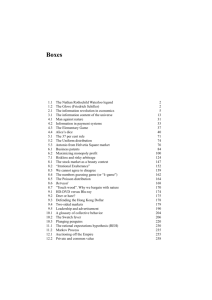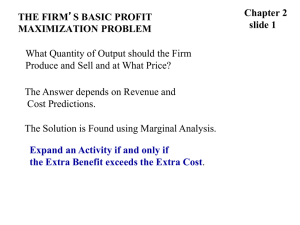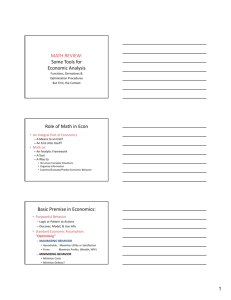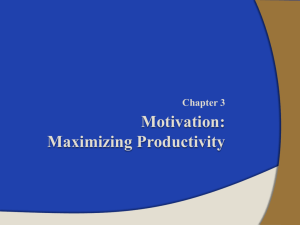Least Cost Rule
advertisement
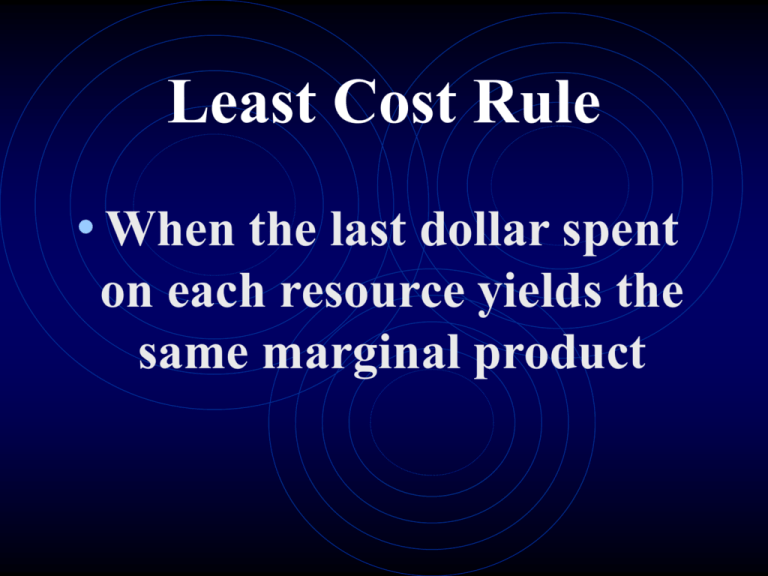
Least Cost Rule • When the last dollar spent on each resource yields the same marginal product Least Cost Rule • That is the cost of any output is minimized when the ratios of marginal product to price of the last units of resources used are the same for each resource. Least Cost Rule MP of L = Price of L MP of C Price of C Profit Maximizing Rule • Purely competitive resource market the MRC = Price • We know the profit maximizing condition is MRP = MRC thus • MRP = Price Profit Maximizing Rule • A firm will achieve its Profit Maximizing combination of resources when each resource is employed at the point at which MRP = Price • PL = MRPL PC = MRPC Profit Maximizing Rule MRPL = MRPC =1 PL PC MRPs must be EQUAL to their price and the ratio is therefore equal to 1 Numerical Illustration of Least Cost Rule • Combination of Labor and Capital in producing 50 units of output • Trial and Error leads you to see 3 units of labor and 2 units of capital • Total product 28+22 =50 Least Cost • MP L = 6 = 3 C=9=3 P 8 4 12 4 Total Cost (3 x $8) + (2 x $12) = $48 Check other combos for cost All cost combinations are higher Profit Maximizing • Profit Maximizing is not at 50 units • Profit Maximizing – each input should be employed until it’s Price = MRP • If MRP > Price you can increase profit by employing more of that resource Profit Maximizing • Find where MRP = Price • The firm should employ 5 units of labor and 3 units of capital • Total Cost (5 x $8) = 40 + (3x $12) = 36 = $76 Profit Maximizing Total Revenue = $130 find it two ways • Total output (37+ 28) x $2 (price of key chain) • Sum of Total revenue of labor ($74) plus Total revenue of capital ($56) Profit Maximizing • Total Revenue – Total Cost = Profit • $130 - $76 = $54

